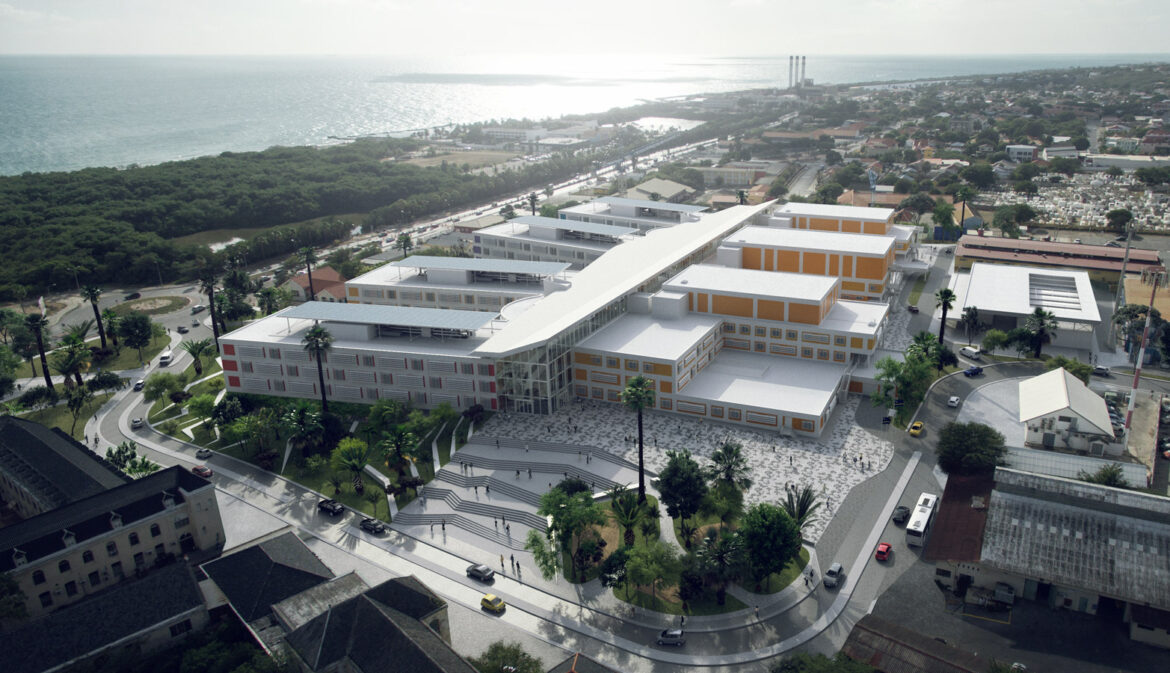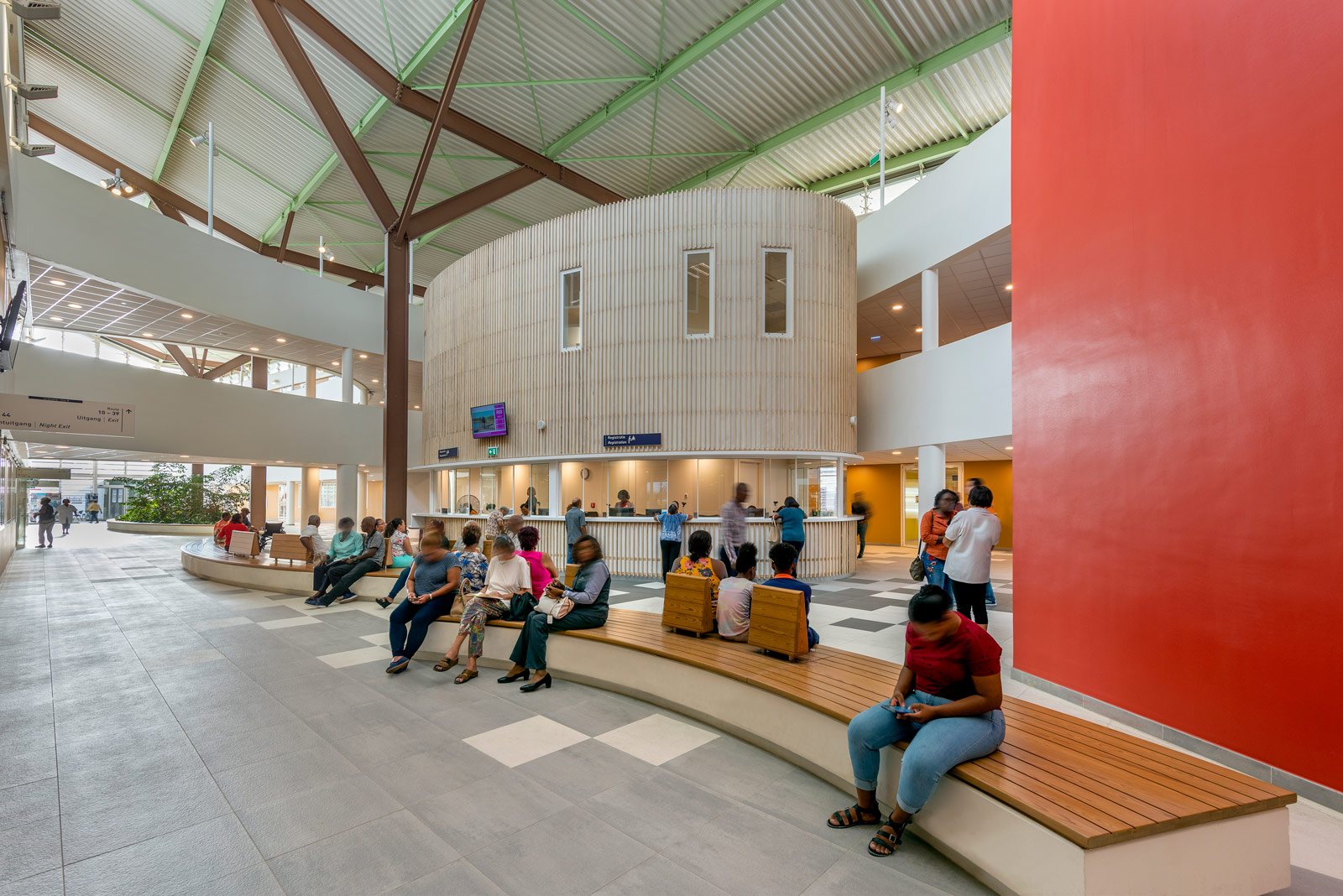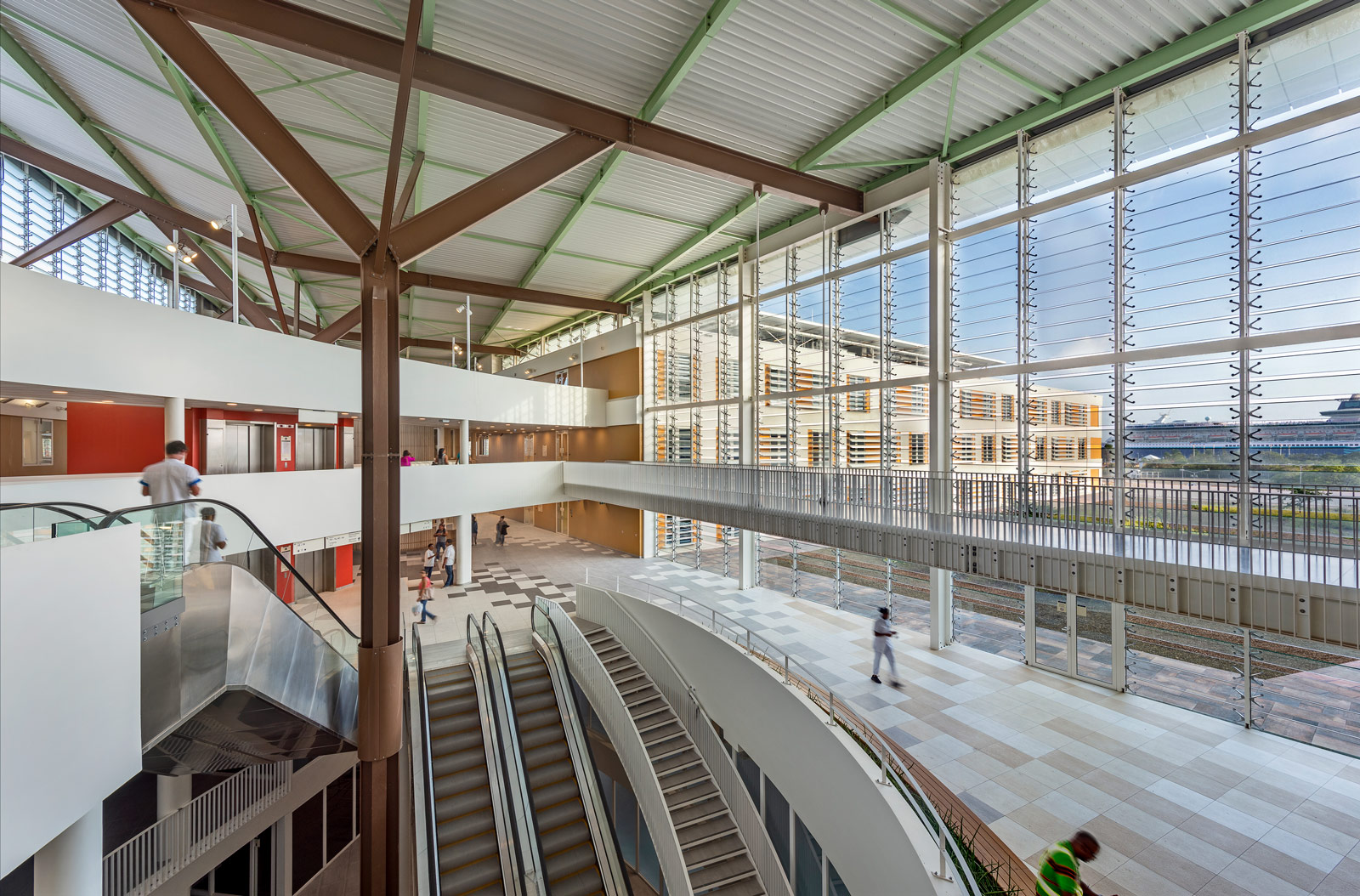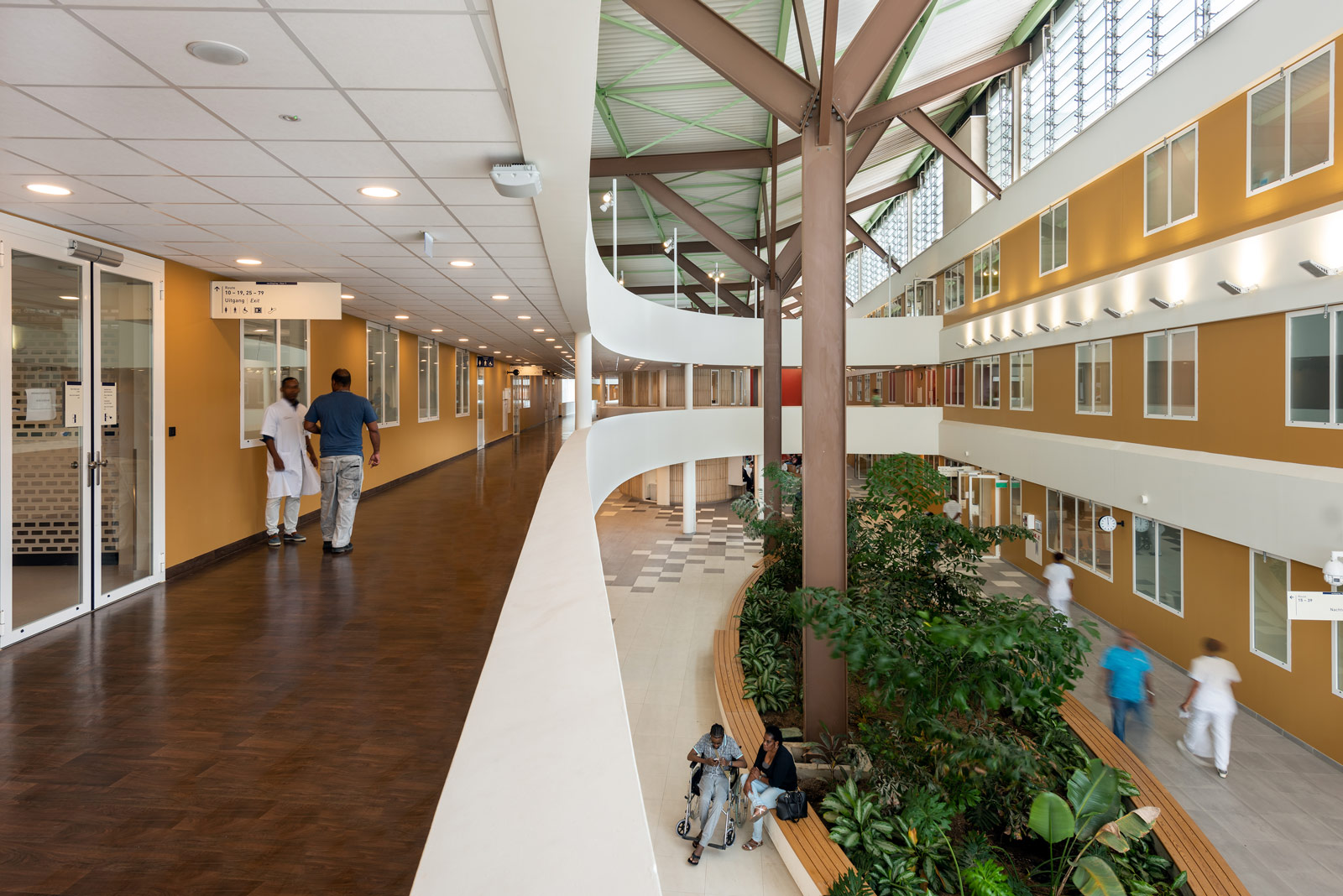
LEED Gold for state-of-the-art hospital in Curaçao
Curaçao Medical Center most sustainable hospital in Caribbean
The new, state-of-the-art hospital Curaçao Medical Center (CMC) in Otrabanda on Curaçao received LEED Gold Status in June 2020. LEED (Leadership in Energy and Environmental Design) is a prestigious, international certificate awarded to healthy, highly efficient and cost-effective green buildings. OZ, together with EGM, realized this hospital (completed in November 2020), which has become the most sustainable hospital in the Caribbean (population 44 million) when receiving LEED Gold. OZ and EGM worked together towards this status. In our vision of a context-based design, attention was paid from the first design phase on to energy reduction, an optimal indoor climate for hospital staff and patients, and design that is flexible and therefore long lasting.
A hospital ‘di nos’
The hospital matches the island of Curaçao. It is a hospital that responds to the history, the culture, the climate, the natural circumstances and the population of Curaçao. A hospital ‘di nos’ (of us), or in other words a hospital that should be for everyone, with a recognizable environment that gives peace and contributes to healing. In the design phase there were several ambitions. One of them was to create sustainable solutions that provide a better healing environment for the inhabitants of Curaçao. The transition from an outdated hospital to a state-of-the-art facility that meets international standards represents a significant improvement, both locally and regionally. Another ambition was to create a pleasant, healthy and safe building. Such a design promotes the well-being of patients and staff, but also, for example, reduces stress and medical errors. The Program of Requirements, set up by a team of experts, included LEED Gold as a requirement.

Sustainable location and construction
When it became clear that the hospital had to be relocated to a World Heritage Site, OZ advised on this special integration process. The integration had to meet the requirements of UNESCO, but at the same time also those for LEED GOLD. Ergo, preservation of the historic environment and buildings combined with the application of new technology and innovation. This brought with it a healthy tension, in which solutions with a good balance were always sought. Not least, the option for future expansion had to be taken into account. The CMC can be rearranged with all functions being interchangeable, and a wing can be added.
How do you achieve energy reduction in a hospital in the tropics?
OZ’s many years of experience in designing for the tropics was naturally applied to the hospital. This resulted, among other things, in cooling the atrium via the tropical wind. The design is based on the ‘Trias Energetica’. Energy reduction, use of energy from sustainable sources and efficient use of fossil fuels were leading. Substantial reductions have been achieved in water and electricity consumption when calibrated against LEED’s benchmark. Building on Curaçao is: ensuring that the heat stays outside and the cold inside. The most important solutions that together provide energy reduction are the central hall or atrium that is naturally cooled, the roof gardens, well-insulated shell and the sunproof facade.

The tropical wind cools the atrium
Because of its large size (more than 100 meters long and 15 meters high) and the desire to have the space experienced as an outdoor space, it was decided to ventilate the atrium naturally. Mechanical cooling of the hall would not be cost-effective or desirable from a sustainability perspective. The tropical wind that blows through the atrium provides the cooling (it is always at least 3 degrees cooler than outside). To facilitate the flow of the wind, the facade has glass slats that open and close automatically based on the temperature and weather. Most of the slats are in the north and east facade. In this way, maximum use is made of the prevailing wind direction on Curaçao.
Preventing heat stress in the Netherlands with facade technologyConstruction in the Netherlands is geared towards winter weather. The hot summers of recent years confront us with this fact. South-facing glass facades cause heat stress. The knowledge that OZ has with building in the tropics can be applied well in designs in the Netherlands for the new summer temperatures. The new BENG standard also states as of January 2021 that new buildings must not overheat easily. |

Patients want sunlight, but not tropical heat
OZ was responsible for the facade design. OZ is a specialist in designing facades that sufficiently repel the heat of the tropical sun. One complication that had to be considered was condensation. The heat-cold difference causes condensation and you can’t have that in a hospital. One of the nice questions from the tender: provide enough daylight, but no more than two hours of direct sunlight. On the east and west facade this is difficult because of the low sun. The facade has become a highly insulating building component. Aluminum blinds are placed in front of almost all windows, while indoor activities are cleverly organized throughout the floor plan based on cooling requirements. Nevertheless, OZ’s design offers a high incidence of light, which contributes to a pleasant working environment and also to the recovery of the patients. Furthermore, greenery was also used to prevent heat stress. In the new, above-ground parking garage and on the hospital roof, the undesirable ‘heat island’ effect could occur due to the absorption of sunlight. Therefore, the sustainable solution of a parking garage covered by roof gardens and the hospital roof of reflective white roofing was chosen.

Water reduction
The consumption of drinking water has been reduced by approximately 37% compared to the LEED benchmark. For service water a reduction of approximately 55% applies, also compared to the LEED benchmark. Condensation water from air-conditioning units is collected in two underground reservoirs. The collected water is used to water the landscape. If desired, in the future use can also be made of ‘deep sea cooling’ for cooling medical equipment. The connections are in any case present.
Want to know more?
www.usgbc.org
View the project page of Curaçao Medical Center
